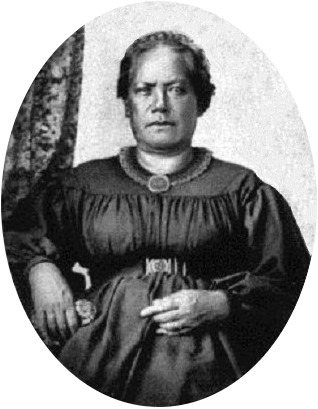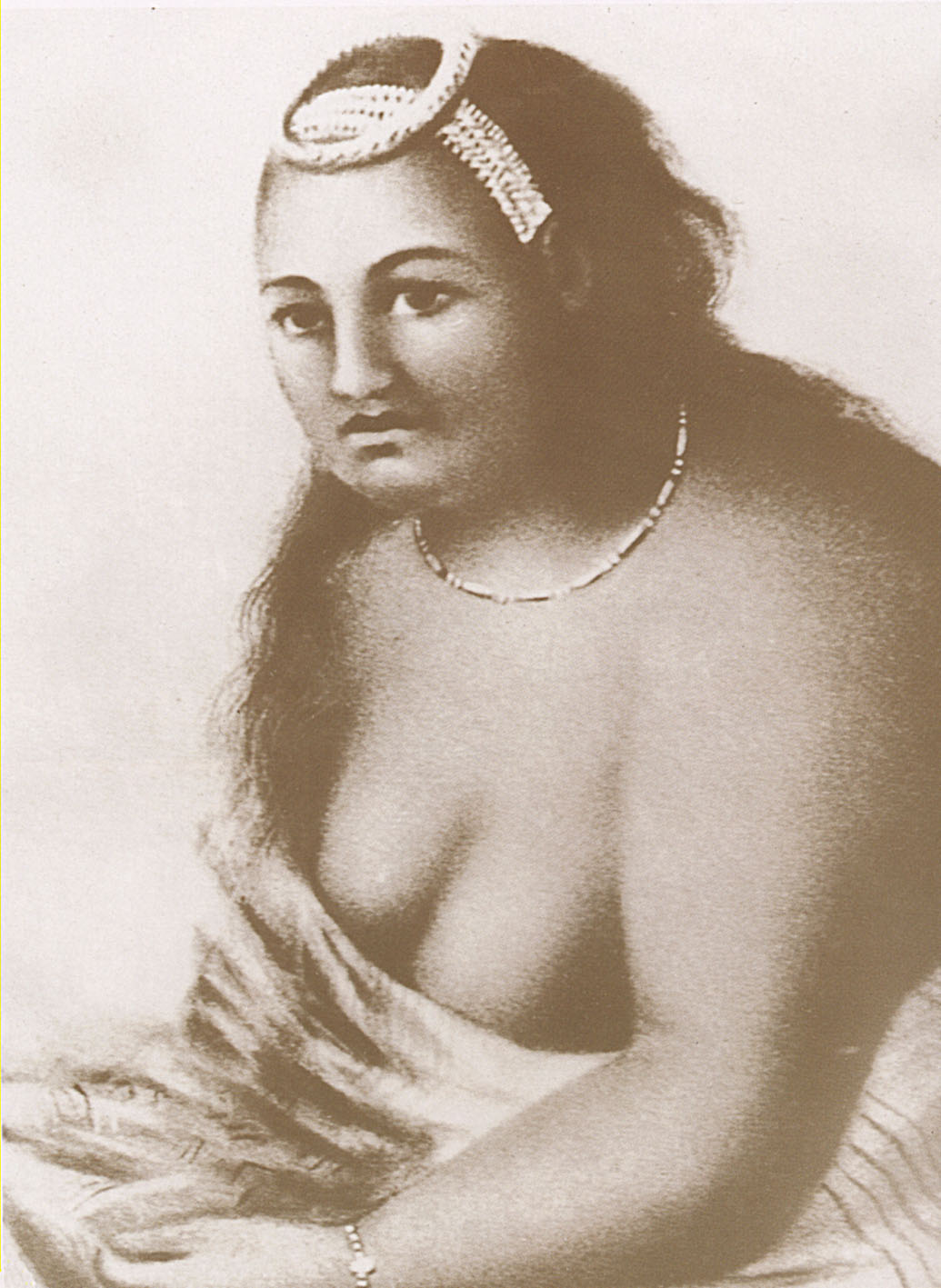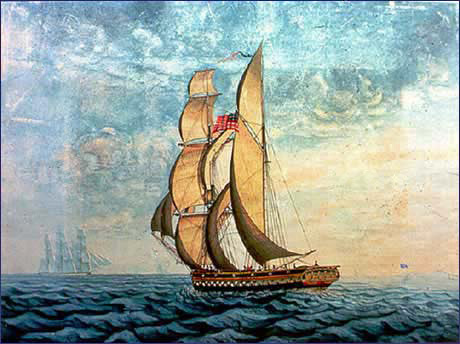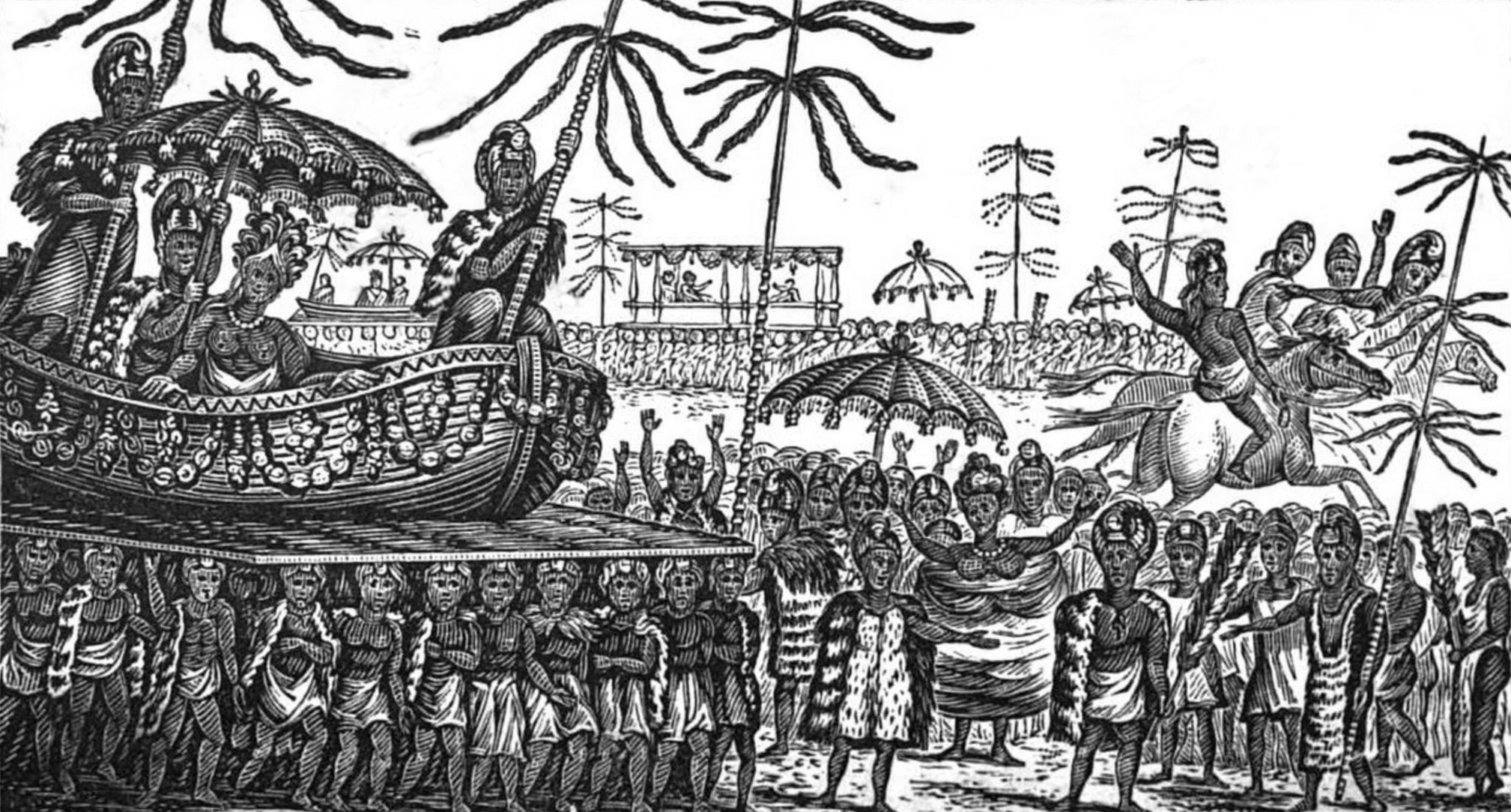|
Bernice Pauahi
Bernice Pauahi Bishop KGCOK RoK (December 19, 1831 – October 16, 1884), born Bernice Pauahi Pākī, was an '' alii'' (noble) of the Royal Family of the Kingdom of Hawaii and a well known philanthropist. At her death, her estate was the largest private landownership in the Hawaiian Islands, comprising approximately 9% of Hawaii's total area. The revenues from these lands are used to operate the Kamehameha Schools, which were established in 1887 according to Pauahi's will. Pauahi was married to businessman and philanthropist Charles Reed Bishop. Ancestry, birth and early life Pauahi was born in Honolulu on December 19, 1831, in ʻAikupika the grass hut compound of her father, Abner Kuhooheiheipahu Pākī (c. 1808–1855). Pākī was an ''aliʻi'' (noble) from the island of Molokaʻi, and son of Kalani-hele-maiiluna, who descended from the ''aliʻi nui'' (ruling monarchs) of the island of Maui. Her mother was Laura Kōnia (c. 1808–1857), the younger daughter of Pauli K ... [...More Info...] [...Related Items...] OR: [Wikipedia] [Google] [Baidu] |
Kōnia
Laura Kanaholo Kōnia (c. 1808–1857) was a high chiefess of the Hawaiian Kingdom, Kingdom of Hawaii. She was the mother of Bernice Pauahi Bishop, the founder of Kamehameha Schools. Life She was the youngest daughter of Pauli Kaōleiokū, Pauli Kaōleiokū by his second wife, High Chiefess Luahine Kahailiopua. Luahine was descended from Keaweʻīkekahialiʻiokamoku, Keaweikekahialiiokamoku through her mother Kailipakalua. She married High Chief Pākī, Abner Kuhooheiheipahu Pākī at Honolulu, Oahu, Oahu. Their marriage was one of the first western Christian ceremonies in the Hawaiian Islands. They married at the recently built Kawaiahaʻo Church, Kawaiahao Church on December 5, 1828. Kōnia and Pākī lived at Lahaina, Hawaii, Lahaina when that was the capital, and the King and the Kuhina Nui, Kekāuluohi had their residence there. The king finally transferred the seat of government to Honolulu, Pākī and Konia accompanying him. By 1840, King Kamehameha III had a written 1 ... [...More Info...] [...Related Items...] OR: [Wikipedia] [Google] [Baidu] |
Charles Reed Bishop
Charles Reed Bishop (January 25, 1822 – June 7, 1915) was an American businessman, politician, and philanthropist in Hawaii. Born in Glens Falls, New York, Glens Falls, New York (state), New York, he sailed to Hawaii in 1846 at the age of 24, and made his home there, marrying into the royal family of the kingdom. He served several monarchs in appointed positions in the kingdom, before its overthrow in 1893 by Americans from the United States and organization as the Territory of Hawaii. Bishop was one of the first trustees of and a major donor to the Kamehameha Schools, founded by his late wife's request to provide education to Hawaiian children. He founded Hawaii's first successful bank, now known as First Hawaiian Bank. Based on his business success, he also founded the Bishop Museum, Bernice Pauahi Bishop Museum, named for his late wife. Early life On January 25, 1822, Charles Reed Bishop was born to Maria (Reed) and Samuel Bishop in Glens Falls, New York, Glen Falls, New Yor ... [...More Info...] [...Related Items...] OR: [Wikipedia] [Google] [Baidu] |
Molokai
Molokai , or Molokai (), is the fifth most populated of the eight major islands that make up the Hawaiian Islands, Hawaiian Islands archipelago in the middle of the Pacific Ocean. It is 38 by 10 miles (61 by 16 km) at its greatest length and width with a usable land area of , making it the fifth-largest in size of the main Hawaiian Islands and the List of islands of the United States by area, 27th largest island in the United States. It lies southeast of Oahu, Oahu across the wide Hawaiian islands channels, Kaʻiwi Channel and north of Lanai, Lānai, separated from it by the Hawaiian islands channels, Kalohi Channel. The island's agrarian economy has been driven primarily by cattle ranching, pineapple production, sugarcane production and small-scale farming. Tourism comprises a small fraction of the island's economy, and much of the infrastructure related to tourism was closed and barricaded in the early 2000s when the primary landowner, Molokai Ranch, ceased operations due ... [...More Info...] [...Related Items...] OR: [Wikipedia] [Google] [Baidu] |
Royal School (Hawaii)
The Royal School is a historic school founded in 1839 in Honolulu, Hawaii, as the Chiefs' Children's School. The school was renamed as the Royal School in 1846. After the boarding closed in 1850, it became a day school for children. It later became a public elementary school, and moved to its present campus in 1967. The present Royal Elementary School continues to educate children from kindergarten to Grade 5 and has been named a Blue Ribbon School several times. History The Chiefs' Children's School was founded by King Kamehameha III of the Kingdom of Hawaii as a boarding school to educate the children of the Hawaiian royalty (''aliʻi''). The school was first located where the ʻIolani Barracks stand now. The need for the school was agreed upon during the general meeting of the mission in June 1839. The buildings were ready by 1840, and two more students were added in 1842. An 1844 article in the ''Polynesian'' listed all children with the exception of John William Pitt Kīn ... [...More Info...] [...Related Items...] OR: [Wikipedia] [Google] [Baidu] |
Mumps
MUMPS ("Massachusetts General Hospital Utility Multi-Programming System"), or M, is an imperative, high-level programming language with an integrated transaction processing key–value database. It was originally developed at Massachusetts General Hospital for managing hospital laboratory information systems. MUMPS technology has since expanded as the predominant database for health information systems and electronic health records in the United States. MUMPS-based information systems run over 40% of the hospitals in the U.S., run across all of the U.S. federal hospitals and clinics, and provide health information services for over 54% of patients across the U.S. A unique feature of the MUMPS technology is its integrated database language, allowing direct, high-speed read-write access to permanent disk storage. This provides tight integration of unlimited applications within a single database, and provides extremely high performance and reliability as an online transaction pro ... [...More Info...] [...Related Items...] OR: [Wikipedia] [Google] [Baidu] |
Kuhina Nui
Kuhina Nui was a powerful office in the Kingdom of Hawaii from 1819 to 1864. It was usually held by a relative of the king and was the rough equivalent of the 19th-century European office of Prime Minister or sometimes Regent. Origin of the office Before the establishment of the office of ''Kuhina Nui'' by Kamehameha, there was a position called Kālaimoku ("kālai" meaning "to carve" and "moku" being an island). This was an ancient office from the very dawn of Hawaiian civilization. During this time before the ''Kuhina Nui'' Kalanimoku, a trusted chief of Kamehameha, was the Kālaimoku until Kamehameha established the office of the ''Kuhina Nui''. When King Kamehameha II assumed the throne in 1819, his father's favorite wife, Queen Kaʻahumanu, told him Kamehameha I had wished for her to rule the kingdom alongside him. Whether this was really the will of Kamehameha I is a matter of debate. In either case, Kamehameha II did not object and the office of ''Kuhina Nui'' was created f ... [...More Info...] [...Related Items...] OR: [Wikipedia] [Google] [Baidu] |
Keaweʻīkekahialiʻiokamoku
Keaweīkekahialiiokamoku (c. 1665 – c. 1725) was the king of Hawaii Island in the late 17th century. He was the great-grandfather of Kamehameha I, the first king of the Kingdom of Hawaii. He was a progenitor of the House of Keawe. Biography He was believed to have lived from 1665 to 1725. He was son of Keakealaniwahine, the ruling Queen of Hawaii and Kanaloakapulehu. He is sometimes referred to as King Keawe II, since prior to him there was already Keawenuiaumi. Keawe was surnamed "īkekahialiiokamoku". Keaweīkekahialiiokamoku, a strong leader, ruled over much of the Big Island. He is said to have been an enterprising and stirring chief, who traveled all over the eight islands, and obtained a reputation for bravery and prudent management of his island. It appears that in some manner he composed the troubles that had disturbed the peace during his mother's time; mainly the conflict between the independent I family of Hilo. It was not by force or by conquest, for in that case ... [...More Info...] [...Related Items...] OR: [Wikipedia] [Google] [Baidu] |
Kalaninuiamamao
Kalaninuiamamao (sometimes called Ka-I-i-Mamao or Kaeamamao) was a prince of the Big Island of Hawaii, or 1st Alii Nui of Kaū, an ancestor of the Queen Liliuokalani. Retrieved 2014-5-2. He is probably the Hawaiian chief with the most varied spelling of his name. The was composed in honor of his birth and was passed by him to his daughter Alapaiwahine. Biography Kalaninuiamamao was born of |
Christian Name
A Christian name, sometimes referred to as a baptismal name, is a religious personal name given on the occasion of a Christian baptism, though now most often assigned by parents at birth. In English-speaking cultures, a person's Christian name is commonly their first name and is typically the name by which the person is primarily known. Traditionally, a Christian name was given on the occasion of Christian baptism, with the ubiquity of infant baptism in modern and medieval Christendom. In Elizabethan England, as suggested by William Camden, the term ''Christian name'' was not necessarily related to baptism, used merely in the sense of "given name": Christian names were imposed for the distinction of persons, surnames for the difference of families. In more modern times, the terms have been used interchangeably with ''given name'', ''first name'' and ''forename'' in traditionally Christian countries, and are still common in day-to-day use. Strictly speaking, the Christian name ... [...More Info...] [...Related Items...] OR: [Wikipedia] [Google] [Baidu] |
Kamehameha II
Kamehameha II (November 1797 – July 14, 1824) was the second king of the Kingdom of Hawaii. His birth name was Liholiho and full name was Kalaninui kua Liholiho i ke kapu ʻIolani. It was lengthened to Kalani Kaleiʻaimoku o Kaiwikapu o Laʻamea i Kauikawekiu Ahilapalapa Kealiʻi Kauinamoku o Kahekili Kalaninui i Mamao ʻIolani i Ka Liholiho when he took the throne. Early life Kamehameha II was born in the month of Hanaiaʻeleʻele (corresponding to November) 1797 in Hilo, on the island of Hawaiʻi, the first born son of Kamehameha I with his highest-ranking wife Keōpuolani. It was originally planned that he would be born at the Kūkaniloko birth site on the island of Oʻahu but the Queen's sickness prevented travel. Given in care to his father's trusted servant Hanapi, who took the child to rear him in the lands of Kalaoa in Hilo Paliku, he was taken back, after five or six months, by his maternal grandmother Kekuʻiapoiwa Liliha because she felt he was not getting ... [...More Info...] [...Related Items...] OR: [Wikipedia] [Google] [Baidu] |
Kalanipauahi
Pauahi (c.1804–1826) was a member of the royal family of the Kingdom of Hawaii in the House of Kamehameha. Referred as Pauahi in her lifetime, she is often referred to as Kalanipauahi or Kalani Pauahi to differentiate her from her niece and namesake Bernice Pauahi Bishop. Life Pauahi was born circa 1804. Her mother was Keouawahine, daughter of Kauhiwawaeono of Maui by his wife, chiefess Loe-wahine, who in turn was daughter of Kameeiamoku. Her father was the High Chief Pauli Kaʻōleiokū (1767–1818). The name ''Pauahi'' originated in an incident which occurred in her childhood. By an accidental explosion of gunpowder she narrowly escaped being burned to death. Five men were killed in the catastrophe, her mother house was burned to the ground, and she was badly injured. In commemorating her escape she was given the name Pauahi, which is composed of two Hawaiian words, ''pau'', "finished", or "completed" and ''ahi'', "fire", which, when translated, means "the fire is out". ... [...More Info...] [...Related Items...] OR: [Wikipedia] [Google] [Baidu] |
Kalaimanokahoʻowaha
''Kalaimanokahoʻowaha'' (also known as Kanaʻina) was an aliʻi high chief of the island of Hawaii who lived during the period of Captain James Cook's visit to the islands. He was the chief said to have struck the first blow to Cook when he attempted to kidnap Kalaniʻōpuʻu, the king of the island. He was called Kanaʻina nui (an aliʻi title) as a birthright from his father, Keaweʻopala, first born son of Alapainui. After his father was killed by Kalaniʻōpuʻu, he would serve the new king as a kaukau aliʻi, a service class of Hawaiian nobility that his mother, Moana Wahine had descended from. This aliʻi service line would continue throughout the Kingdom of Hawaii. Birth and family Kalaimanokahoʻowaha was the son of the alii nui of the island of Hawaii, Keaweʻopala and Moana Wahine. He was given the nickname ''ka naʻina'' which, in the Hawaiian language means: "The conquering". His paternal grandfather was Alapainui and his maternal grandmother was ʻIlikiāmoana. ... [...More Info...] [...Related Items...] OR: [Wikipedia] [Google] [Baidu] |








